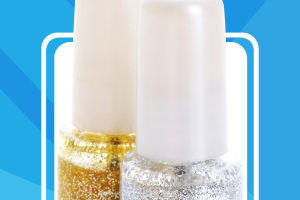Stainless steel is a daily use of steel materials, because of its corrosion-resistant properties are widely used in various fields.
There are many classifications of stainless steel, austenitic stainless steel, martensitic stainless steel, ferritic stainless steel, and duplex stainless steel, etc..
So how should we test the identification is the kind of stainless steel?.
1.Magnetic detection
For stainless steel to go out other than austenitic stainless steel is magnetic, with a magnet to detect the material to be tested.
If there is a strong magnetic (except weak magnetic), first exclude 201, 304, 316 and other 200 and 300 series of austenitic stainless steel and other materials, but non-magnetic or weak magnetic exclude 416, 430, 443, etc., to do a simple can only judge.
2.Chemical reagents
There is a special reagent called nickel qualitative liquid (mainly to detect the important elemental content of nickel in stainless steel).
It will be dropped on the surface of stainless steel, instant oxidation after electrification, generated light white or light yellow, indicating that the stainless steel does not contain nickel.
Generated light rose red and immediately fade into dark yellow, indicating that the stainless steel contains nickel in about 1-2%. Generated rose red and does not fade, the Description of the stainless steel contains nickel in more than 4%, the brighter the rose-red color indicates that the higher the nickel content.
3.Color
After pickling the surface color of stainless steel: 300 series stainless steel silvery white and jade.
400 series stainless steel white and slightly gray, luster is weak
200 series stainless steel color and 300 series stainless steel similar, slightly lighter.
The surface color of stainless steel without pickling: 300 series stainless steel is brownish white
400 series stainless steel is brownish black
200 series stainless steel is black.
Stainless steel is widely used, many kitchen utensils are made of stainless steel.
Stainless steel tableware: beautiful, corrosion-resistant and rust-free, popular, stainless steel is made of iron-chromium alloy mixed with nickel, molybdenum and other metals.
Some of these metals are harmful to humans, so care should be taken when using, do not hold strong alkaline or strong oxidizing substances for a long time, easy to make harmful substances are dissolved out.
Inside the kitchen will also be used to glass tableware, which has the advantages of high hardness, chemical stability, smooth and easy to clean surface, environmental protection, etc..
Glass products, like crystal, are easy to break.
Glass tableware clean and hygienic, but sometimes also "mold", which is the glass of sodium silicate and carbon dioxide reaction in the air to generate white sodium carbonate crystals.
Ceramic tableware belongs to the high-end presence of tableware, with easy to wash and keep clean, good thermal stability, slow heat transfer, chemical stability, durability, porcelain porcelain pores are very few, low water absorption, painted decoration and other advantages popular.
The biggest weakness is the low impact strength, not resistant to falling and touching, easy to break.
Among them, bone china has become a representative of high-end tableware.


